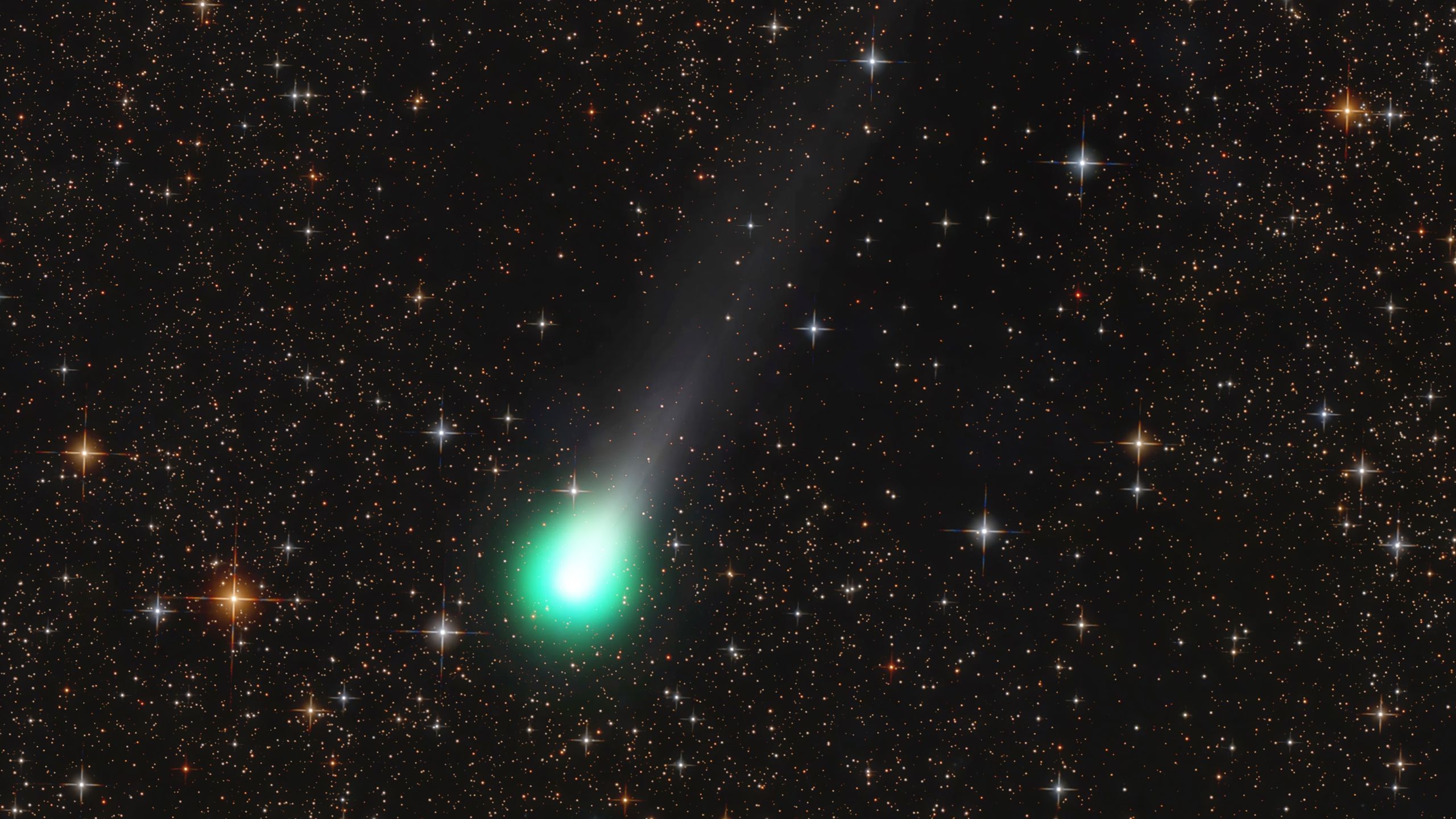If you want to see two comets, your best chance will be early this week. After a year without any comets bright enough to be seen without specialist equipment, two — Comet C/2025 A6 (Lemmon) and Comet C/2025 R2 (SWAN) — have come along at once.
Comet Lemmon may look more like a lime than its name suggests, but on Tuesday (Oct. 21), the dusty snowball from the outer solar system will reach its closest point to Earth and most likely shine at its brightest. It’s now reached magnitude 4.5, according to SpaceWeather.com — about the same brightness as spring’s Beehive Cluster (M44) and only a little dimmer than the Andromeda galaxy (M31).
Follow the shape of stars in the Big Dipper’s handle to “arc to Arcturus”; the comet will be about two-thirds of the way there. On Tuesday, it will be a little higher. For Comet SWAN, look for the Summer Triangle of bright stars — Vega, Deneb and Altair — in the southwest. You’ll find Comet SWAN about halfway between Altair and the horizon.
Helpful finder charts and sky maps for both comets are available at The Sky Live, In-The-Sky.org and Stellarium, as well as in night-sky apps such as Sky Guide, Sky Tonight and SkySafari 7 Pro. If you want to try photographing the comets, our guide has you covered.
The two comets are on vastly different journeys. Comet Lemmon will get to within 56 million miles (89 million kilometers) of Earth Tuesday, according to The Sky Live, on its way to looping around the sun Nov. 8 during its 1,350-year orbit of the sun. (However, Jupiter sapped some of Comet Lemmon’s orbital energy, shortening its period by nearly 200 years, according to Star Walk, so it will not return until 3179.)
Comet SWAN is a long-period comet, orbiting the sun every 20,000 years, according to Universe Today, and on Monday, it will be 24 million miles (39 million km) away as it exits the inner solar system. That’s about a quarter the distance between Earth and the sun.
First Appeared on
Source link












